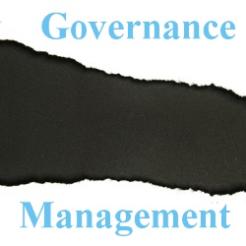In the search for the best possible results, Andrew Chaggar concedes it's time to fully separate the governance and management teams at start-up charity European Disaster Volunteers.
If you read my blog regularly you’ll know that over the past months I’ve been working on reorganising and restructuring large parts of our charity following a period of rapid growth. The need to manage our increased size and sustain this growth has called for a complete overhaul of our financial systems and a greater investment in market research and communications.
With most of these updates complete we’re now focusing on the most significant changes of all - those relating to our charity’s governance.
Our founding members - myself included - were a group of disaster responders who were very experienced in project and volunteer management but much less so in running a charity. When researching governance issues we discovered that much of the available guidance on governance contained examples that were “prescriptive” (telling you what boards should do) rather than “descriptive” (telling you what boards actually do and how they do it).
This left us a little unclear about the best way to proceed, so we took what advice we could and, upon signing our charity’s governing document, we became its first trustees. However, as we lacked the resources to hire staff we also became managers responsible for the day-to-day running of the charity.
In the time since some of our original trustees have moved into less hands-on, more steward-like roles while a core group - myself again included - has continued to both govern and manage our charity. While this has worked up to a point, as we’ve grown it’s become apparent that we now need to recruit new trustees and complete the split between our charity’s governance and management. There are several reasons why this is the case.
Firstly, as we continue to grow it’s simply going to become unsustainable for the same key individuals to both govern and manage the charity effectively without either burning out or dropping the ball. We could, arguably, continue by fulfilling just the “maintenance” aspects of governance such as for example preparing annual accounts and reports and running the board by ourselves. However, taking this position would reduce our governance to “box-checking” and neglect the additional benefits that strengthening our board should bring.
For example, if governance is viewed from the perspective of “stewardship” - or guarding the charity’s assets and holding management to account - then more clearly delineating trustee from staff responsibilities should help us develop and demonstrate appropriate checks and balances. This independent accountability, in turn, should strengthen our position as we pursue larger and more structured funding.
We also expect that a stronger board will have other implications in terms of improved fundraising. It’s become clear that we’ve started to exhaust our existing networks and, to a degree, also our knowledge base. For example, although we’ve made in-roads, we’re still struggling somewhat to tap into corporate funding. In theory, recruiting a new trustee with greater knowledge and contacts in the business world should help us tackle this issue.
Ensuring we stay on course
Finally, we also want our new board to offer strategic leadership and fresh perspectives. While we’ve just about completed our current strategic and business planning process - which in itself highlighted everything I’m discussing in this blog - monitoring and updating the plan will be a mission in itself. As a result we want trustees who can not just hold us to our agreed plans but help us adapt them as the situation evolves.
Building a new board that provides all of this is going to be a challenge in itself. It will certainly be a step-by-step process and, like many other charities, I’m sure we’ll never have every role filled or every skill we’d like available. However, for all the reasons I’ve mentioned, its clear we have much to gain from undertaking this process.
The ideal first step we’ve been discussing is to appoint a new chair, with me stepping down to focus on my role as CEO. This new chair would then help recruit and develop the rest of the board leaving me to focus on our next planned overseas operation. Of course, finding the right person to take on this key role is going to be critical and right now we’re still discussing the merits of someone completely new versus the traits of people we already know who might fit.
I hope you’ll come back next month to see how we’re getting along.









